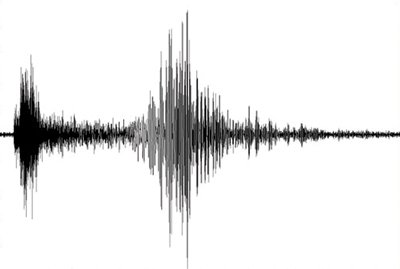BEFORE IT HAPPENS
Gather documents and cash
– Store important documents such as insurance policies, deeds,
property records and birth certificates in a bank safe-deposit box.
Store copies in your disaster-supplies kit.
– Keep a stash of cash or traveler’s checks at home where you
can quickly get them in case of evacuation.
BEFORE IT HAPPENS
Gather documents and cash
– Store important documents such as insurance policies, deeds, property records and birth certificates in a bank safe-deposit box. Store copies in your disaster-supplies kit.
– Keep a stash of cash or traveler’s checks at home where you can quickly get them in case of evacuation.
Make a family emergency plan
– Identify a safe place in each room of your home and practice rapidly getting there. Best locations include under a sturdy desk or table, or beside a sturdy, large piece of furniture such as a sofa or bed. Avoid doorways; doors could bang open and shut during an earthquake or storm.
– Practice home-evacuation drills. Choose someplace nearby for your family to meet. Expect a lack of transportation.
– Educate your children. Get a copy of your school district’s disaster policy regarding transportation and the release of students. Keep photos of family members in your wallet in case someone is missing.
– Take a first-aid course. Learn CPR.
– Know where the nearest police and fire stations are. Know the route to the nearest hospital emergency room. Keep critical phone numbers and your insurance-policy numbers by your phone and in your wallet.
– Enter your “ICE” – In Case of Emergency – numbers on your cell phone so emergency workers will know whom to contact if you’re hurt. For example, enter “ICE husband John” and the phone number.
– Find out whether any neighbors have medical or other expertise. Plan to unite if your neighborhood becomes isolated. Help elderly, disabled or single-parent neighbors create an emergency plan. Get contact information for their relatives.
Evaluate your home
Structural safety
– Make sure your home is bolted to the foundation and the structure is properly reinforced.
– Check the roof, foundation, chimney and walls for cracks and overall condition. Contact trained contractors in your area for information on retrofitting.
– If you live in an apartment, know where your building’s utility controls are and how to use them.
Plumbing
– Family members should know how to shut off waterlines in case of a leak in the house. Label the shut-off valve clearly; it’s the first valve in the line after it enters the house.
– Strap your water heater (gas and electric ones) to studs in the wall with heavy-duty metal strips or to the floor to prevent gas leaks and possible fires from broken pipes. You can find strapping kits at home-improvement stores.
Gas
– All occupants should also know how and when to turn off the gas. If you smell gas after a storm or other emergency, shut off the meter valve found at the first fitting on the supply pipe coming out of the ground. Use a wrench to turn the valve either way until it is perpendicular to the pipe. Keep a wrench attached to the gas meter with a wire. Call the gas company to get service restored.
Electricity
– Buy a portable, gas-powered generator for emergency electricity. Only appliances that can use extension cords should be attached to a generator. A 2200-watt unit can power a refrigerator and several lamps. Keep fuel in a safe, protected container.
– Learn how to shut off the electricity: Turn off single breakers first, then switch off the main breaker. To turn back on, switch the main breaker first, then the single breakers. On older panels, pull the main fuse blocks.
Household items
– Place flashlights in hallways, bathrooms and bedrooms. Keep a flashlight, spare batteries and sturdy shoes under the bed. (Shoes will protect you from broken glass and other debris on the floor.)
– Evaluate each room. Ask yourself: If the home began shaking, what would fall? Secure appliances, bookshelves and hutches to wall studs. Mirrors should be hung on double hooks; do not lean them against the wall.
– Place heavy objects and electronic equipment on lower shelves. Use large Velcro patches or nonskid rubber shelf liner to help keep items in place.
– Place a beanbag of sand or shot in the bottom of vases and other breakable items to help hold them down.
– Use plastic, not porcelain hanging planters.
– Store household chemicals safely, preferably on or near the floor.
AFTER AN EVENT
Check on everyone
– Provide first aid and a safe place for anyone who is injured or very upset. Check on and help neighbors.
– Call 911 or other emergency phone numbers only if injuries are serious or the situation is life-threatening. Phone lines will be jammed, and unnecessary calls can hamper rescue efforts.
Assess surroundings
– Check for hazards such as fire, leaks, chemical spills and precarious structures. Natural-gas companies ask customers not to turn off their gas service at the meter unless they smell or hear a leak. If you smell gas coming from inside your home, call your gas company from a phone outside. It’s important not to touch electric switches or use the telephone until the situation is corrected. Only the gas company can restore service.
– Plug appliances into a generator directly or with extension cords. Never plug a generator into a household outlet because power can flow back to the utility’s main system and injure utility workers trying to restore power. Always run generators outdoors to prevent buildup of toxic fumes.
– Turn on the radio. In the case of an emergency that displaces many people, shelter locations will be announced.
Stay warm
– If the chimney is intact, use your fireplace, burning seasoned wood with the damper open. Do not use the oven as a heat source. Never use a barbecue or hibachi indoors; charcoal produces toxic fumes that can quickly kill.
– Close off rooms that aren’t being used.
– Close drapes and doors to prevent drafts.
– Fill portable heaters outdoors and store fuel outside in a proper container. Ventilate kerosene heaters. Keep heaters away from curtains, blankets and clothing, and always turn off space heaters before going to bed.
– Dress children and the elderly warmly, in layers, with their heads covered.
– Give pets food, water and dry shelter. Keep them away from antifreeze.
– Turn off all appliances except the refrigerator and one light. This prevents a power surge when power is restored.
Call for help
– If phone service is available, give your out-of-state contact an update on your situation. If service is spotty, ask your contact to call your insurance company if necessary, and to call your family and friends who may be worried about you.
Gather water
– Be prepared to treat, filter or boil contaminated water.
– Use hot water sparingly. Most water heaters can retain heat for three days.
– If the water supply is cut off, drinking water is still available in your home in water heaters, in-house plumbing and melted ice cubes.
– Use a hose to get drinking water from your water heater’s drain valve in an emergency. It will be cloudy at first but will clear up after a few gallons.
– If pipes break or leak, turn off water at the shut-off valve inside your home.
Prepare food
– If you have a wood stove with a flat top and an undamaged chimney, you can cook on it.
– If the electricity is out, open the refrigerator and freezer doors only when necessary. Eat refrigerated food first, frozen food next and dried or canned food last.
– Refrigerated foods should be OK for about eight hours, holding a temperature of 40 degrees, unless the door is opened often.
– If the power comes on within the eight hours, anything with an “off” odor should be thrown out.
– Food in a freezer of 12 cubic feet or more should stay frozen for 48 hours if the freezer is full and the door kept closed; that food will keep safely cold for up to 72 hours. Frozen food that has completely thawed – especially vegetables and dishes containing meat, fish, eggs, cheese and cream sauce – should be tossed out because of possible bacteria growth. If the freezer temperature is higher than 40 degrees, throw out all food.











